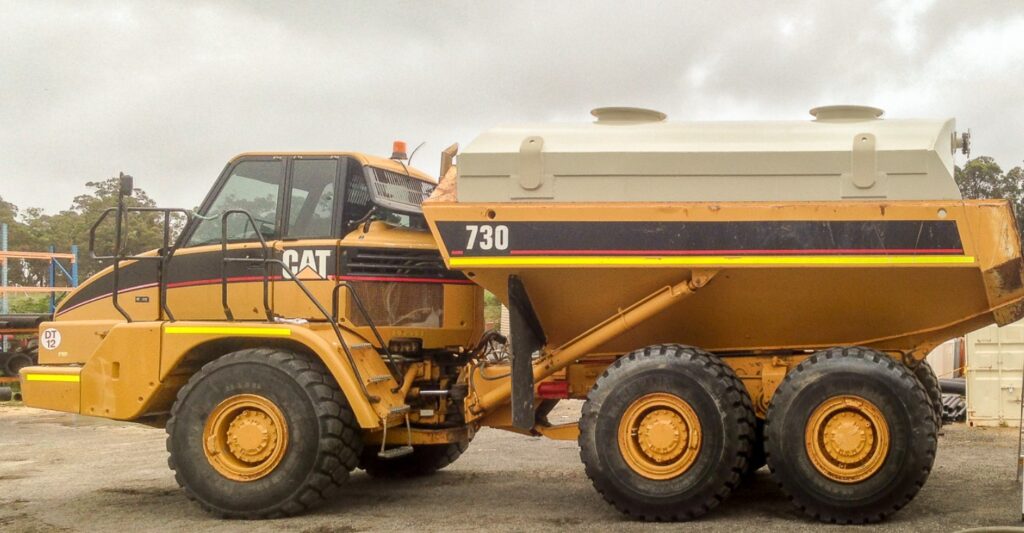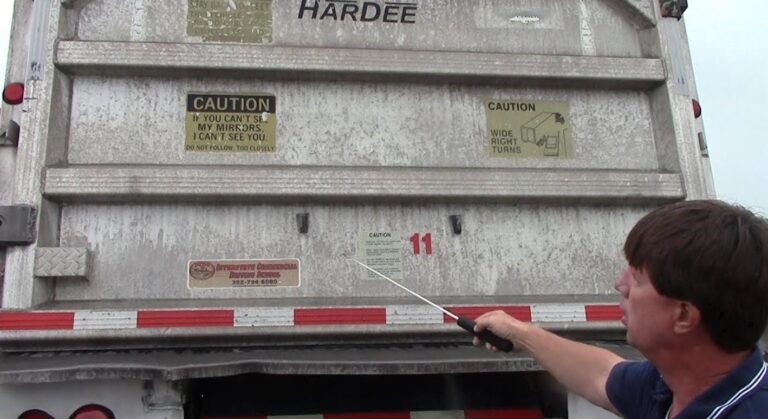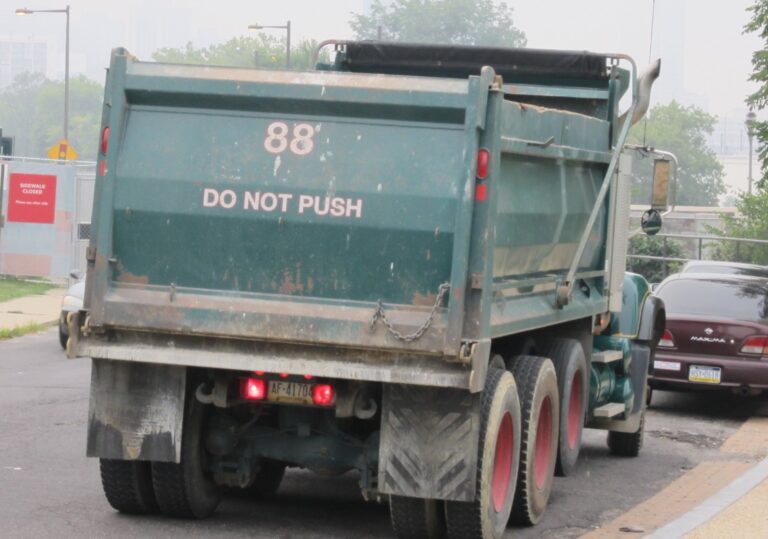What Is A Baffle On A Truck? All You Need To Know
Are you looking for What Is A Baffle On A Truck? This question captures the curiosity of many, especially those in the logistics and transportation sectors. Baffles are integral components in trucks, specifically in tanker trucks.
They play a crucial role in ensuring the stability and safety of these vehicles during transit. Understanding the function and importance of baffles can greatly enhance one’s knowledge of truck design and operation.
Key Takeaways
- Baffles are partitions or barriers within tanker trucks.
- They control the movement of liquid cargo, enhancing stability.
- Baffles come in various types, each serving a specific purpose.
- Understanding baffles is crucial for truck safety and efficient operation.
What Is A Baffle On A Truck?
A baffle on a truck, specifically in a tanker truck, is a partition or barrier installed within the tank that controls the movement of liquid cargo. Baffles reduce the liquid’s sloshing effect, enhancing the stability and safety of the truck during transportation.

Significance of Baffles in Trucking Industry
Role of Baffles in Ensuring Safety
Baffles are vital for the safe transportation of liquids. They minimize the liquid movement inside tanker trucks, which can be hazardous. Without baffles, the liquid’s motion could lead to imbalance, making the truck difficult to control. This feature is especially important in trucks carrying large volumes of liquid.
Types of Baffles and Their Functions
There are several types of baffles used in trucks. Some common types include longitudinal, transverse, and perforated baffles. Each type has a unique design and serves a specific purpose in controlling liquid movement.
Longitudinal baffles run lengthwise, while transverse baffles are positioned across the tank. Perforated baffles, on the other hand, allow limited fluid flow through them.
Design and Construction of Baffles
Materials Used in Baffle Construction
The construction of baffles is a critical aspect. Materials like aluminum, steel, and sometimes plastic are used. The choice of material depends on the type of liquid being transported. For example, corrosive liquids may require stainless steel baffles for durability and safety.
Impact on Truck’s Performance
The design of baffles directly impacts the truck’s performance. Properly designed baffles contribute to better handling and stability. They also play a role in the wear and tear of the vehicle, as a well-balanced liquid load results in less strain on the truck’s structure.
Maintenance and Inspection of Baffles

Regular Inspection for Safety Compliance
Regular maintenance and inspection of baffles are crucial. These checks ensure that the baffles are in good condition and function as intended. Any damage or wear can significantly impact the safety and efficiency of the truck.
Importance in Preventive Maintenance
Preventive maintenance of baffles is not just about compliance but also about prolonging the life of the truck. It helps in identifying potential issues before they escalate, ensuring the truck remains roadworthy and safe.
Baffles and Transportation Regulations
Compliance with Transportation Safety Standards
Baffles must comply with transportation safety standards set by various regulatory bodies. These standards ensure that the trucks are safe for the roads and pose minimal risk to the driver and the public.
Varying Regulations Based on Cargo
The regulations regarding baffles may vary depending on the type of cargo. For instance, hazardous materials might have stricter requirements compared to non-hazardous liquids. Truck operators need to be aware of these regulations.
Innovations in Baffle Design
Technological Advancements in Baffle Technology
Recent years have seen innovations in baffle design. These advancements aim to further improve safety, efficiency, and environmental friendliness. New materials and designs are continually being tested and implemented.
Future Prospects in Baffle Technology
The future of baffle technology looks promising. With ongoing research and development, we can expect to see more sophisticated designs that cater to the evolving needs of the trucking industry.
What Is A Baffle For CDL?
A baffle for CDL (Commercial Driver’s License) refers to a critical component in the context of commercial trucking, particularly for drivers operating tanker trucks.
For CDL holders, understanding baffles is essential for safe driving practices. A baffle in this context is a partition or barrier inside a tanker truck’s tank, designed to control the movement of liquid cargo.

This understanding is crucial for CDL holders, as they are responsible for the safe transportation of various liquid cargoes, which can range from non-hazardous materials like water or milk to hazardous chemicals.
For CDL drivers, especially those carrying liquids, knowledge about baffles forms part of their training and expertise. They must understand how baffles influence the handling and stability of their vehicle, especially under different driving conditions. This knowledge is essential for passing the CDL exam, particularly for the tanker endorsement, which allows them to drive tanker trucks.
The source of this information is based on CDL training manuals and guidelines provided by the Department of Transportation, which detail the requirements and knowledge needed for obtaining a CDL, particularly for tanker truck operations.
What Is The Purpose Of A Baffle On A Tractor Trailer?
The primary purpose of a baffle on a tractor-trailer, especially those designed to carry liquids, is to control the movement of the liquid cargo during transit. In a liquid-carrying tanker, the liquid can slosh back and forth, which can significantly affect the vehicle’s stability.
This sloshing effect can be dangerous, particularly during sudden stops, turns, or accelerations, as it can lead to a shift in weight distribution, potentially causing the truck to tip over or lose control.

Baffles, installed within the tank, break up the tank’s internal space. This design limits the volume of liquid that can move in unison, thereby reducing the kinetic energy generated by the liquid’s movement.
As a result, the truck is more stable on the road, reducing the risk of accidents. The effectiveness of baffles in enhancing safety on the road is well-documented in transportation safety research and guidelines provided by traffic safety authorities and trucking associations.
What Is The Difference Between A Baffle And A Bulkhead?
The difference between a baffle and a bulkhead in the context of truck transportation lies in their design and function within a tanker truck. A baffle is a partition that does not span the entire cross-section of a tank.
It allows some liquid to pass through or around it. This design reduces the momentum of the liquid cargo, thereby aiding in stabilizing the vehicle during movement.
On the other hand, a bulkhead is a solid partition that completely separates sections of a tank. Unlike baffles, bulkheads do not allow any liquid to pass through.
They are used to create completely separate compartments within the tank, often to carry different types of liquids simultaneously or to enhance the structural integrity of the tank.
The difference in the design between baffles and bulkheads leads to different handling characteristics for the tanker truck. Baffles are more about managing the liquid’s movement for stability, while bulkheads are about compartmentalization and structural support.
This information can be verified through technical documents and guidelines from truck manufacturing and transportation regulatory bodies, which provide detailed descriptions of tanker truck designs and their components.
Conclusion
To conclude, What is a baffle on a truck remains a fundamental question in understanding truck safety and efficiency. Baffles are crucial components that significantly impact the stability and handling of tanker trucks.
Their role in maintaining safety standards and complying with regulations cannot be overstated. As technology advances, we can anticipate further improvements in baffle design, contributing to safer and more efficient transportation of liquids.
People Also Ask
How are baffles designed for different liquids?
The design of baffles is influenced by the type of liquid being transported. For instance, thicker liquids might require different baffle designs compared to thinner ones. The material of the baffle also varies based on the chemical properties of the liquid, such as its corrosiveness.
Do regulations dictate the design of baffles in tanker trucks?
Yes, transportation and safety regulations often dictate the design and use of baffles. These regulations vary depending on the type of cargo and the regions in which the truck operates.
How do baffles contribute to road safety?
By stabilizing the liquid load, baffles reduce the risk of rollovers and loss of control, which is crucial for road safety, especially when transporting large volumes of liquid.
Are there different types of baffles?
Yes, there are different types, including longitudinal, transverse, and perforated baffles. Each serves a specific purpose in controlling the movement of the liquid.
Can baffles be retrofitted into existing tanker trucks?
Retrofitting baffles into an existing tanker is possible but depends on the tanker’s design and the type of baffles being installed. This process should be carried out by professionals to ensure compliance with safety standards.

Welcome to the exhilarating world of Matt Rex, a professional car racer turned renowned vehicle enthusiast. Immerse yourself in his captivating blog as he shares heart-pounding adventures, expert reviews, and valuable insights on cars, trucks, jets, and more. Fuel your passion for speed and discover the beauty of vehicles through Matt’s engaging stories and meticulous expertise. Join the ever-growing community of enthusiasts who find inspiration and expert advice in Matt Rex’s blog—a digital hub where the thrill of speed meets the pursuit of knowledge.







